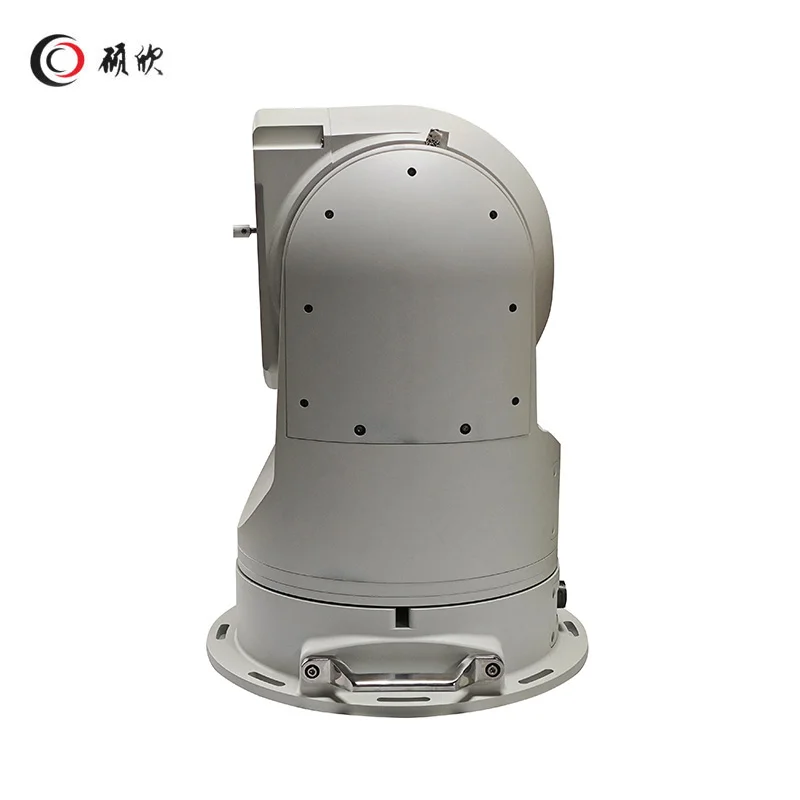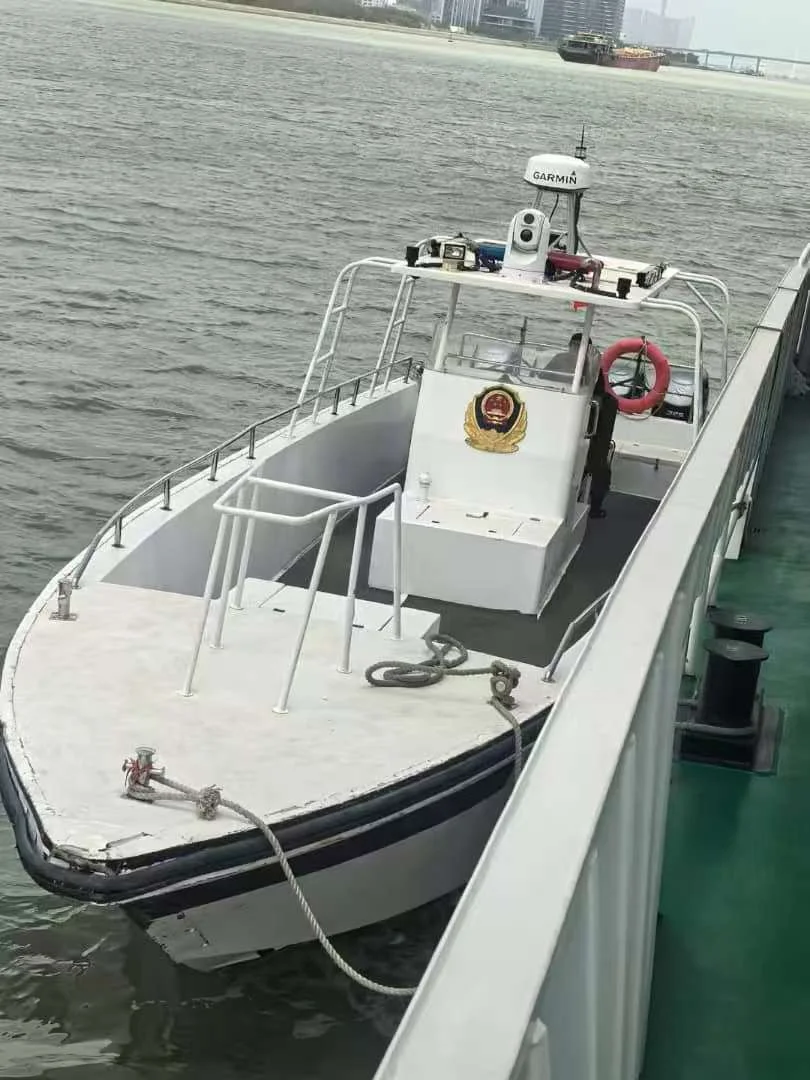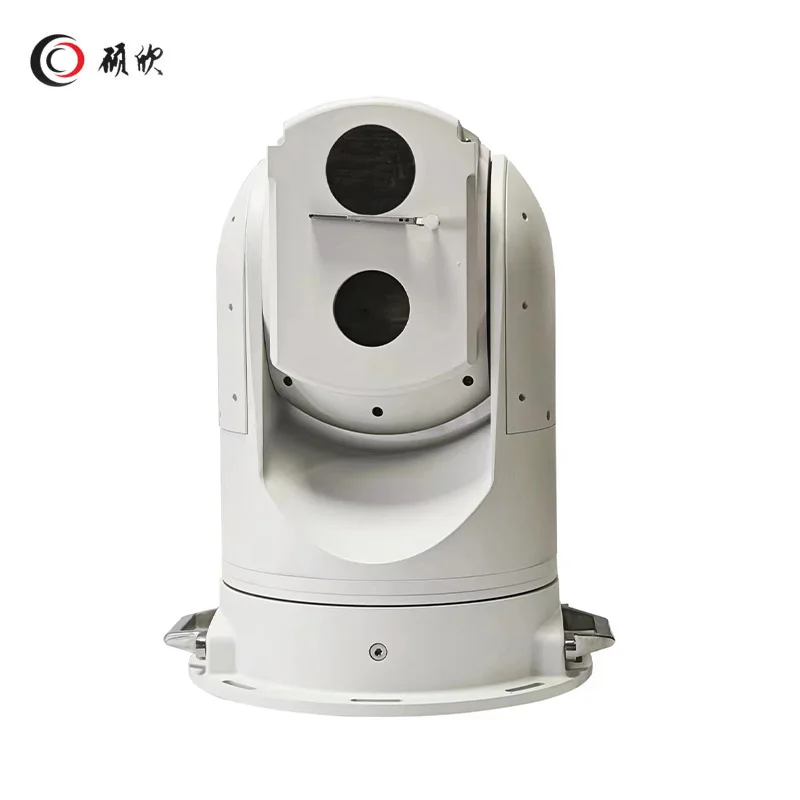Gyro stabilization is vital for top-tier PTZ cameras. It employs motion sensors to identify and neutralize unintended shakes instantly. This feature guarantees steady, sharp video in challenging settings such as aerial drones, moving cars, or gusty areas by offsetting tremors and wobbles. Without this tech, distant zooming and object following become plagued by fuzziness and warping. Shuoxin incorporates next-gen micro-gyros and smart processing to provide durable, high-end PTZ units for security, airborne observation, and transport uses. Systems with gyro stabilization boost picture sharpness, minimize editing work, and adjust to unpredictable situations, becoming essential for important visual operations.
What Is Gyro Stabilization and How Does It Work in PTZ Camera Systems?
Gyro Stabilization is a key feature that makes PTZ cameras perform better in real life. It uses small gyroscopes—sensors that notice how fast something turns—to stop unwanted camera shakes. When a PTZ camera sits on a moving base, like a drone or a truck, or faces vibrations, the gyroscope catches these movements. Then, it tells the motors or software to fix the camera’s position right away.
This system works on two axes, meaning it handles shakes in two directions. This keeps videos smooth even when the camera moves. The gyroscope and stabilization parts talk to each other constantly. This quick teamwork helps the camera stay focused on its target without blurry or warped images.
Why Does Gyro Stabilization Matter for PTZ Camera Performance?
Without Gyro Stabilization, PTZ cameras struggle to make good videos in shaky settings. Imagine filming from a drone, a car, or a tall pole in strong winds. Any shake or vibration ruins the image quality. Gyro Stabilization solves this by keeping the video steady, no matter what’s shaking the camera.
Another helper is electronic image stabilization. It tweaks the video frames to reduce blur even more. Together, these tools make sure your footage stays clear and sharp. This is super important for jobs like security checks, spying, or inspections where every detail counts.
How Do Gyroscopes Contribute to Image Stability?

Gyroscopes are the heart of keeping PTZ cameras steady. They sense tiny changes in how the camera rotates. Then, they send this info to smart programs that adjust the lens or crop the image in a split second. This Gyro Stabilization biax system is great at stopping jitters from wind or engine shakes.
This setup lets the camera “float” separately from its shaky base. It stays locked on the subject, even during fast pans or zooms. The result is smooth, steady video, no matter how unstable the environment gets.
What Happens When PTZ Cameras Lack Stabilization?
Environmental Vibrations Can Wreck Image Quality
Picture trying to watch something from a tall pole in a storm. Without stabilization, every gust makes the video shaky and hard to understand. Vibrations from engines or bumpy ground also cause tiny shakes. These ruined images, especially when zooming in far.
Long-Range Surveillance Gets Blurry and Shaky
When you zoom in a lot with a PTZ lens, every small shake becomes a big problem. Even tiny movements can push your target out of the frame. This causes blurry motion, making it tough to spot objects without extra editing later.
Mechanical Stabilizers Aren’t Always Enough
Old-school mechanical gimbals help a bit, but they struggle with fast movements or shakes in multiple directions. They’re also bulky and need frequent fixes. Electronic systems like Gyro Stabilization are smaller, quicker, and last longer.
What Are the Real Benefits of Using Gyro-Stabilized PTZ Cameras?
You Get Clearer Images in Shaky Places
Whether filming from a drone in windy skies or a pole that sways, Gyro Stabilization keeps your images sharp. Electronic stabilization adds extra smoothness to each frame, making videos even clearer.
Long-Range Zooming and Tracking Work Better

Stable lenses let you focus on faraway objects without losing details to shakes. This is key for watching borders or seas, where targets are far and move fast.
Less Time Fixing Videos Later
Stable footage starts clear, so you don’t need to spend hours editing or fixing it. This saves time and effort, making work faster for tasks like security or mapping from the air.
How Does Shuoxin Deliver Reliable Gyro-Stabilized Solutions?
If you need advanced cameras for tough jobs, Shuoxin offers some of the best stabilized systems out there. They’re experts in electro-optical tools and build PTZ cameras with cutting-edge Gyro Stabilization for demanding tasks like military surveillance or factory checks.
Their team uses smart engineering and deep knowledge to create cameras that handle harsh conditions while giving clear, dependable images. Whether on drones, vehicles, or coastal towers, Shuoxin’s products let professionals capture critical visuals with confidence.
What Technologies Set Shuoxin’s Systems Apart?
Real-Time Motion Fixes Respond Fast
Shuoxin’s stabilization system uses special programs that read gyroscope data instantly. These programs guess movement patterns and stop shakes before they show up in the video. This works great during quick pans or sudden jolts.
Advanced MEMS Gyroscopes Team Up with Smart Controls
Shuoxin uses MEMS gyroscopes—tiny sensors that are super sensitive without being bulky. These feed info to smart control boards that adjust the lens all the time. This keeps the camera steady from every angle. A great example is their 30X EO/IR Dual-Sensor UAV Gimbal Camera, which mixes optical zoom with infrared imaging in a stabilized setup perfect for drones.
Where Can You Use These Stabilized PTZ Cameras?
Border and Coastal Surveillance Needs Long-Lasting Stability
In border areas or coastal waters, where weather and light change fast, stabilized cameras keep monitoring steady day or night. They work well on swaying poles or towers, ensuring clear visuals.
Aerial Checks from Drones Need Lightweight Precision
Drones face lots of turbulence while flying. Only light, quick-responding stabilized cameras can capture clear aerial images for tasks like mapping pipelines, building sites, forests, or disaster areas after storms.
Vehicle-Based Filming Handles Constant Motion
Surveillance vans or patrol cars drive over bumpy roads at different speeds. Without stabilization, videos would be useless. Gyro Stabilization adjusts to bumps and turns, keeping visuals sharp and clear.
How Should You Pick the Right Stabilized PTZ System?
Think About Your Platform and Conditions First
Before choosing a camera, consider where it’ll go. Will it be on a plane, a boat, or a truck? Each place has unique shakes, so you need the right stabilization level. Some setups only need electronic fixes, while others work better with hybrid systems.
Match Zoom Power with Image Needs
If you’re spotting license plates from 500 meters away or tracking ships 5 kilometers out, you need different zoom strengths and image types, like HD, 4K, or thermal infrared. For example:
- For drone missions: Pick light gimbals like the 30X EO/IR Dual-Sensor UAV Gimbal Camera.
- For mobile surveillance: Choose small, tough models with both visible and infrared options.
- For fixed spots: Go for weatherproof cameras with long-range zoom and auto-tracking.
What’s Next for Stabilized Imaging Technology?
AI-Powered Scene Detection Boosts Target Tracking
Artificial intelligence now helps Gyro Stabilization by spotting patterns like people or cars, even when both the camera and the subject move. This adds automatic accuracy for tracking in busy scenes.
Full 360-Degree Coverage Could Be Fully Stable Soon
Future tech aims to combine complete panoramic views with total electronic stabilization. This would allow seamless, all-around surveillance without blind spots, even on shaky platforms like boats or drones.
FAQ
Q1: Can I use gyro-stabilized PTZ cameras indoors?
Yes, but they shine in places with shakes, like near machines or in moving vehicles like buses, for mobile security.
Q2: Is electronic image stabilization enough without gyros?
Not always. Electronic fixes help with small shakes, but Gyro Stabilization biax sensors handle bigger movements faster and better.
Q3: Do all stabilized cameras have thermal imaging?
No, it depends on the model. Some, like dual-sensor setups, combine optical zoom with infrared, while others focus only on visible light.


